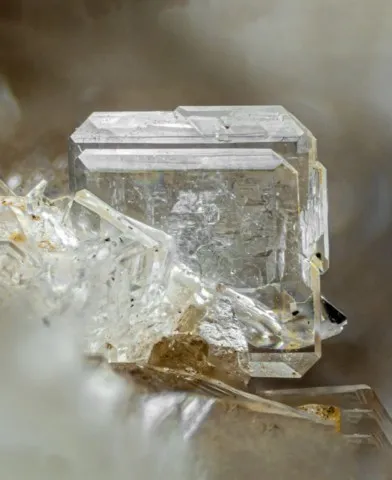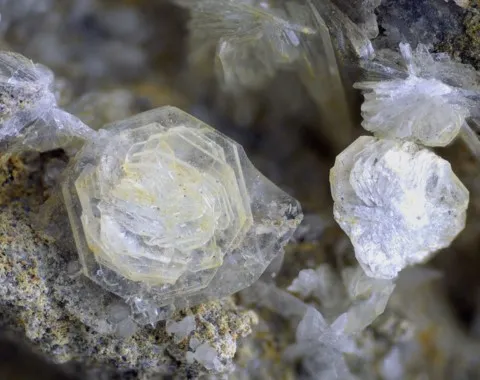TUNISITE
Class : Carbonates, nitrates, borates
Subclass : Anhydrous carbonates
Crystal system : Tetragonal
Chemistry : NaCa2Al4(CO3)4(OH)8Cl
Rarity : Rare
Tunisite is a carbonate from the oxidation zone of hydrothermal veins with calcite matrix. Its name comes from its country of discovery : Tunisia. Tunisite usually occurs in crystalline aggregates composed of tiny (less than 0.2 mm) colorless or white crystals; however, tabular macroscopic crystals measuring up to 8 mm are known, gathered in parallel aggregates.
Main photo : Tunisite from Condorcet, Drôme, France © Gianfranco Ciccolini
Tunisite in the World
Twinning
No twinning known for this mineral species.
Fakes and treatments
No fakes listed for this mineral species.
Hardness : 4.5
Density : 5.51
Fracture : Undetermined
Streak : White
TP : Transparent
RI : 1.573 to 1.599
Birefringence : 0.026
Optical character : Uniaxial +
Pleochroism : None
Fluorescence : None
Solubility : Hydrochloric acid
Magnetism : NoneRadioactivity : None


